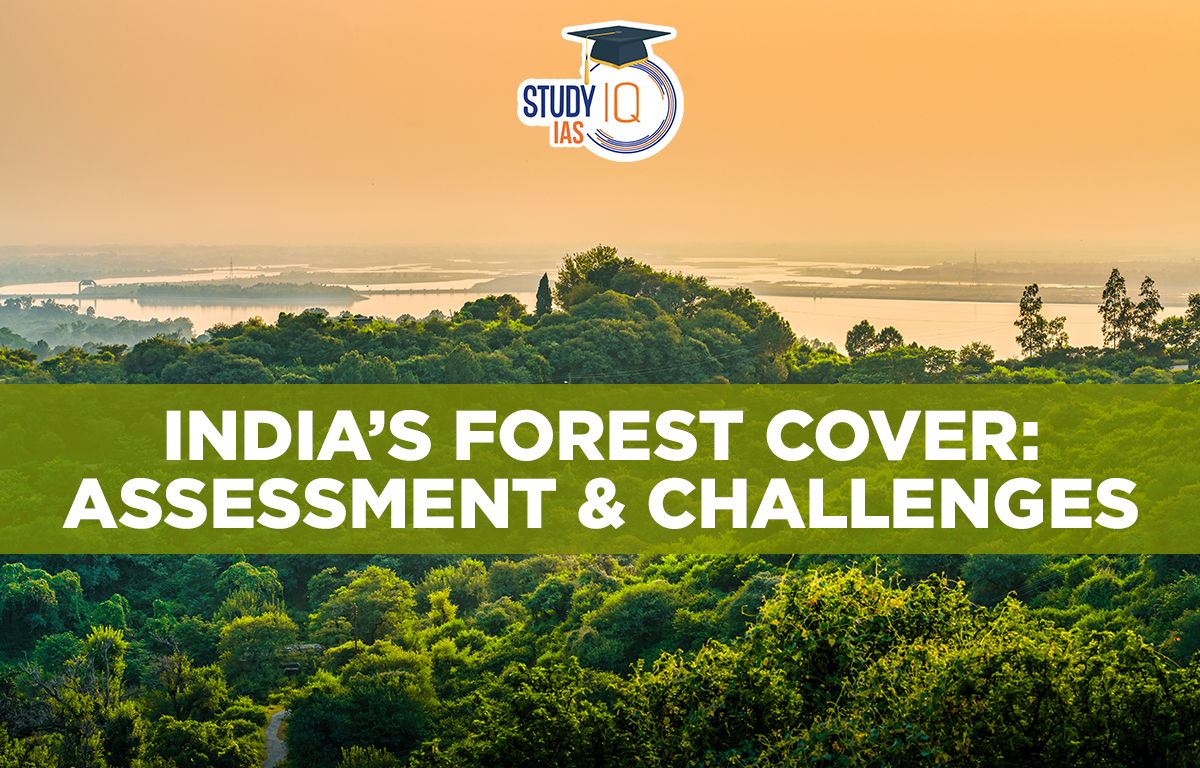Table of Contents
Context: India is one of the few countries to have a scientific system of periodic forest cover assessment that provides “valuable inputs for planning, policy formulation and evidence-based decision-making”.
How is Forest Cover Assessed in India?
- In India, the Forest Survey of India (FSI) is responsible for carrying out forest cover assessment.
- It works under the aegis of the Ministry of Environment, Forest and Climate Change.
- Methodology: The FSI conducts periodic forest cover assessments using a scientific system of mapping and assessment.
- It counts all plots of 1 hectare or above, with at least 10% tree canopy density, irrespective of land use or ownership, within forest cover.
- All land areas with tree canopy density of 40% and above are considered dense forests and those between 10-40% are open forests.
- Since 2003, a new category — very dense forest — was assigned to land with 70% or more canopy density.
- Since 2001, isolated or small patches of trees — less than 1 hectare and not counted as forest — are assessed for determining a notional area under tree cover by putting together the crowns of individual patches and trees.
- Comparison with United Nations Framework:
- Assessment by FSI counts all plots of 1 hectare or above, with at least 10% tree canopy density, irrespective of land use or ownership, within forest cover.
- This disregards the United Nation’s benchmark that does not include areas predominantly under agricultural and urban land use in forests.
- NRSA versus FSI:
- Another organization, the National Remote Sensing Agency (NRSA) estimates forest cover using satellite imagery.
- In the past, NRSA has estimated forest cover for the periods 1971-1975 and 1980-1982, and reported a loss of 2.79% in just seven years.
- However, there have been discrepancies in the forest cover estimates by the two organizations in the past. The FSI and NRSA “reconciled” India’s forest cover at 19.53% in 1987 after much negotiations.

How has India’s Forest Cover Changed over the years?
- Since 19.53% in the early 1980s, India’s forest cover has increased to 21.71% in 2021.
- The India State of Forest Report-2021:
- As per the report, forest and tree cover in the country increased by 2,261 square kilometres or 0.28% since the last assessment in 2019.
- India’s total forest and tree cover was 80.9 million hectares, which accounted for 24.62% of the geographical area of the country.
- The Total Forest cover is 7,13,789 sq km which is 21.71% of the geographical area of the country.
- The Tree cover is 2.91% of the geographical area of the country.
- The report said 17 States and Union Territories had more than 33% of their area under forest cover.
Concerns Associated with India’s Forest cover and its Assessment
- Recorded forest area: Recorded Forest Areas in India are land recorded as forest in revenue records or proclaimed as forest under a forest law, which account for 23.58% of India.
- Over time, some of these areas have lost forest cover due to encroachment, diversion, and forest fires, while tree cover has improved in many places outside of these areas due to agroforestry and orchards.
- Loss of dense forests: Despite extensive plantation efforts by the Indian forest department since the 1990s, dense forests within Recorded Forest Areas have decreased from 10.88% in 1987 to 9.96% in 2021, with nearly 20,000 sq km of dense forests becoming non-forests since 2003.
- However, the loss remains hidden as commercial plantations, orchards, and urban areas outside Recorded Forest Areas are included in the definition of dense forests.
- Shrinking of natural forests: Data from FSI suggests that much of the reforestation in recent years may be due to plantations rather than natural forest growth, as natural forests do not typically grow so rapidly.
- Limited sampling: In 2021, FSI claimed to have established an overall accuracy of 95.79% in identifying forests from non-forests. However, given the limited resources, the exercise was limited to less than 6,000 sample points.
- Lack of transparency: FSI’s data is not freely available for public scrutiny, and it bars the media from accessing its geo-referenced maps. Experts suggest that making the field data freely available could ease the FSI’s burden and allow researchers and enthusiasts to verify the country’s forest data on the ground.
Natural Forests
- Natural forests have evolved naturally to be diverse and, therefore, support a lot more biodiversity.
- They are old and therefore stock a lot more carbon in their body and in the soil.
Manmade Forests
- Plantation forests have trees of the same age, are more susceptible to fire, pests and epidemics, and often act as a barrier to natural forest regeneration.
- Compared to natural forests, plantations are often harvested more readily, defeating carbon goals in the long term.


 Daily Quiz 05 July 2025
Daily Quiz 05 July 2025
 SSC MTS Apply Online for 1075 Posts – ...
SSC MTS Apply Online for 1075 Posts – ...
 Dynamic Pricing: What It Is and Why It's...
Dynamic Pricing: What It Is and Why It's...





















